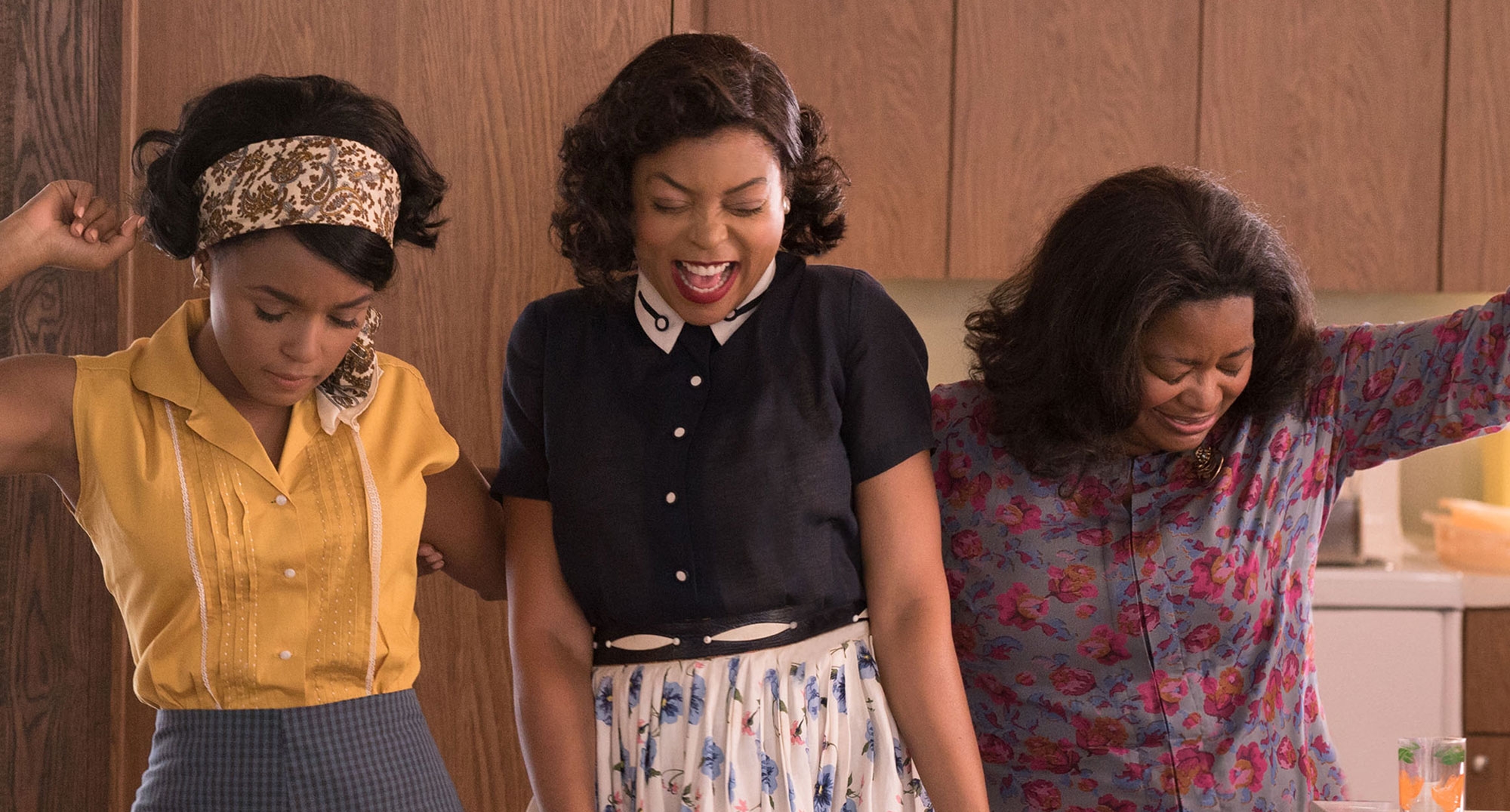
MPAA Rating: PG | Rating: ★★★★
Release year: 2016
Genre: Biography, Drama, History Director: Theodore Melfi
When my wife and I were driving to the movie theater for a date night to see Hidden Figures, I was complaining about recent theater experiences: people had checked cell phones, ate strong-smelling food or wore strong-smelling perfume, or were generally unpleasant to be around (my wife had to change seats when we viewed La La Land as the person behind her repeatedly kicked her seat.) So as the audience in our theater for Hidden Figures responded to the previews of A Dog’s Purpose and The Shack with loud laughter and whispers of “That looks soooo good!,” we glanced at each other knowingly, a bit jaded by typical theater audiences.
Hidden Figures confronts both jaded and typical audience members through its highly conventional construct while expertly using its conventionality as to generate genuine emotional responses. Scene after scene which follows the dramatic playbook worked so effectively as to elicit both tears and cheers within our theater, myself included. There was applause after key scenes, roars of laughter at comedic moments, and murmurs of disapproval at acts of prejudice. Our theater clapped aloud as the credits rolled, and while I didn’t clap, I did find myself won over not only to the film, but to the audience themselves. The best way to frame my experience was one of conversion. In short, the evangelism worked; I was made into a believer not only of Hidden Figures, but of the theatrical experience in general.
Hidden Figures tells the true-life story of three African-American women–Katherine Johnson (Taraji P. Henson), Dorothy Vaughan (Octavia Spencer) and Mary Jackson (Janelle Monae)–who worked as “computers” (essentially mathematicians) at NASA during the 1960s Space Race. Every performance from these three actresses is so stellar and affecting, especially Janelle Monae, who also had a significant supporting role in Moonlight. They brilliantly navigate not only systems of mathematical difficulty, but also the occupational systems of NASA, as well as the larger cultural system of 1960s-era Virginia and systemic racism and prejudice. It’s not an easy role, especially for Katherine, a widow and the mother of three girls. As Katherine, Dorothy, and Mary each face obstacles in their respective roles within NASA, they also form a tight-knit community of friendship and support, holding each other up and celebrating victories when the larger system doesn’t notice or recognize their importance.
The practices of prejudice in Hidden Figures is so blatant and offensive that I wondered how it could have ever been true, and so recent within our history as a nation. An ongoing obstacle for Katherine as she enters a new role helping with top-secret rocket calculations is the lack of a “colored” women’s bathroom in the building, forcing her to run across the Langley campus in order to relieve herself. What initially plays out as fairly comical becomes increasingly frustrating and disheartening, until it culminates in a devastating scene featuring Henson’s strongest moment in the film as she openly and powerfully addresses the prejudice within the office of entirely white men (and one white woman working as a secretary). Similarly, in applying to become the first female African-American engineer at NASA, Mary must take extra courses at the segregated high school (she’s not allowed at all into the college), and ends up having to petition a court judge simply to take the course. She’s encouraged by her husband, a fiery figure in the film who is the strongest promotor of the Civil Rights movement, yet is also an endearing husband and champion of his wife. When he sends her off to her first course with a deep affirmation, I found myself tearing up in the theater, once again taken aback by the film’s power.
Hidden Figures is the better, fuller, more appropriate version of The Help, the fictionalized tale of the experience of under-appreciated African-American women in the 1960s. Where The Help is also highly conventional, its attention ends up more on the white characters’ responses to the black characters than the black characters themselves, and what seems like a film about empowerment and celebration ultimately has a problematic focus. Hidden Figures wisely leaves the white character in the periphery, as this simply isn’t their story. Instead, the film notices those who have been placed in the margins and elevates them to a status of importance and value. Though there are a few moments where the tone feels self-congratulatory, it’s not without reason–Hidden Figures doesn’t hide the systemic injustice and human depravity inherent in recent American history (and still present in our country today) even as it offers an optimistic and uplifting portrayal of human goodness and faithfulness.
Hidden Figures is a celebration of women, of African-Americans, of marriage and family, of intellectual pursuit and practice, of patience in the face of opposition, of humble service and doing an exceptional job even when no one recognizes you or tweets about it. It was the perfect film to watch instead of the 2017 presidential inauguration. I’m humbled and repentant of my snobbish attitude towards movie audiences; even when we’re flawed, we’re still human beings, worthy of respect and dignity. And when we enter into community with others–even if the temporary community of a movie theater audience–it has the power to be transformative. Maybe we need more conventional films like this one. Consider me converted.
IMDB Listing: http://www.imdb.com/title/tt4846340/
Leave a Reply